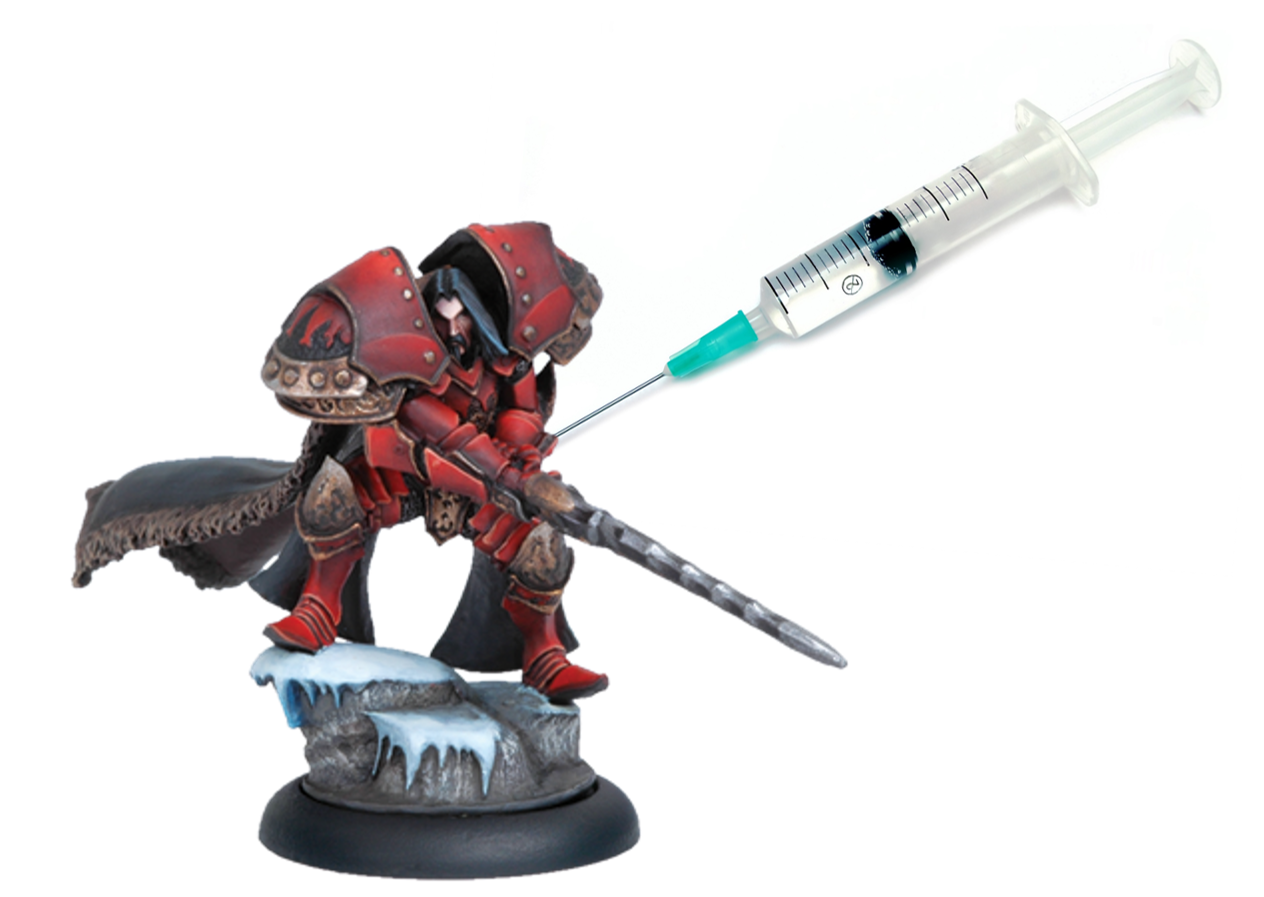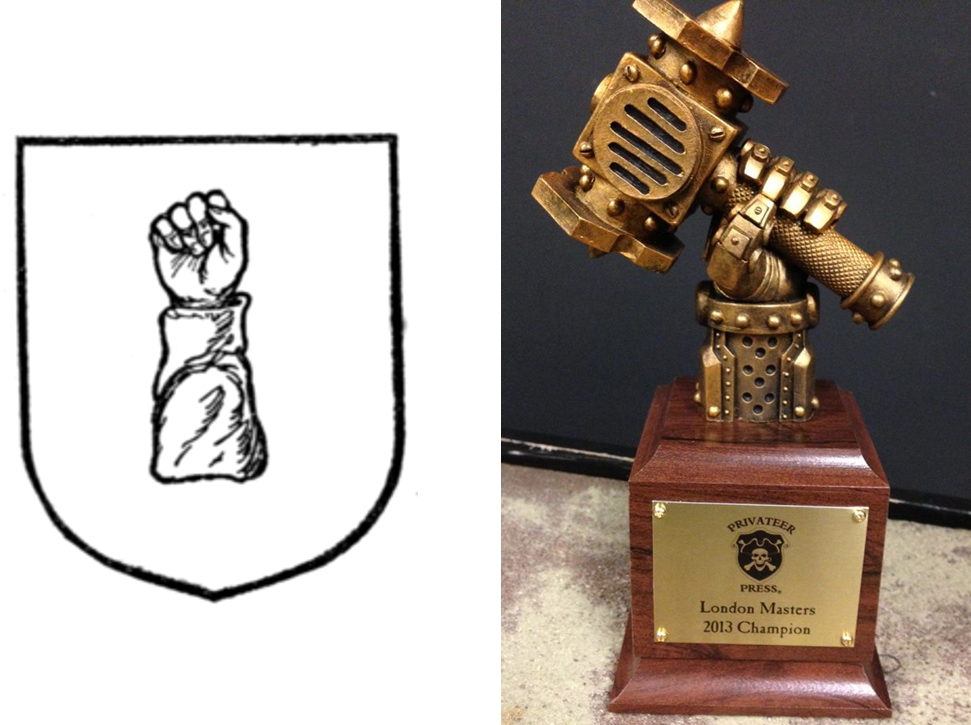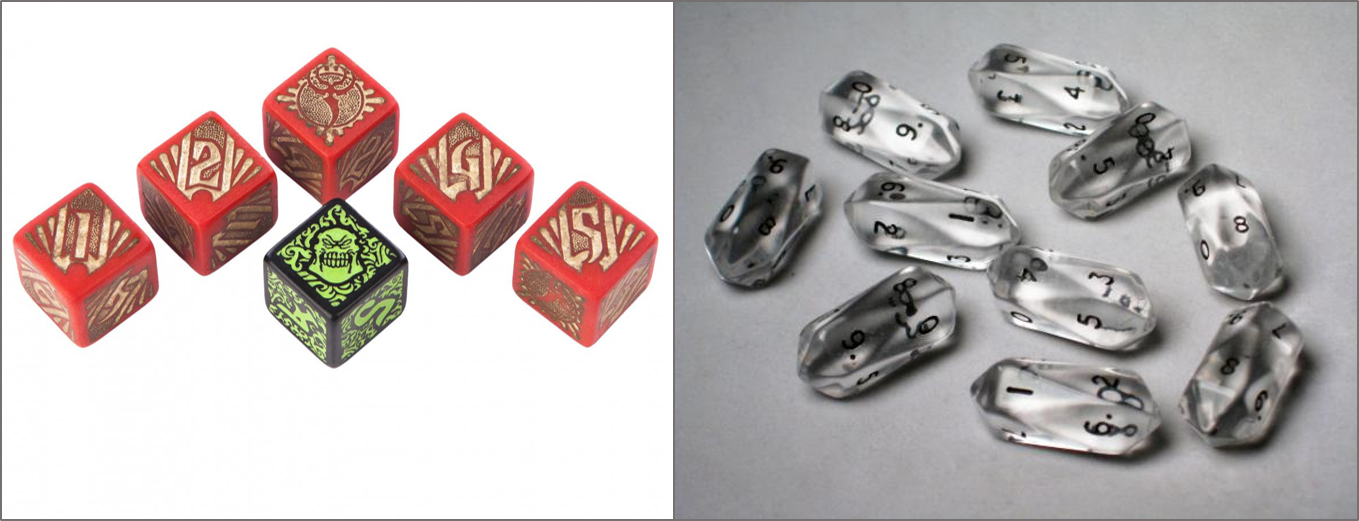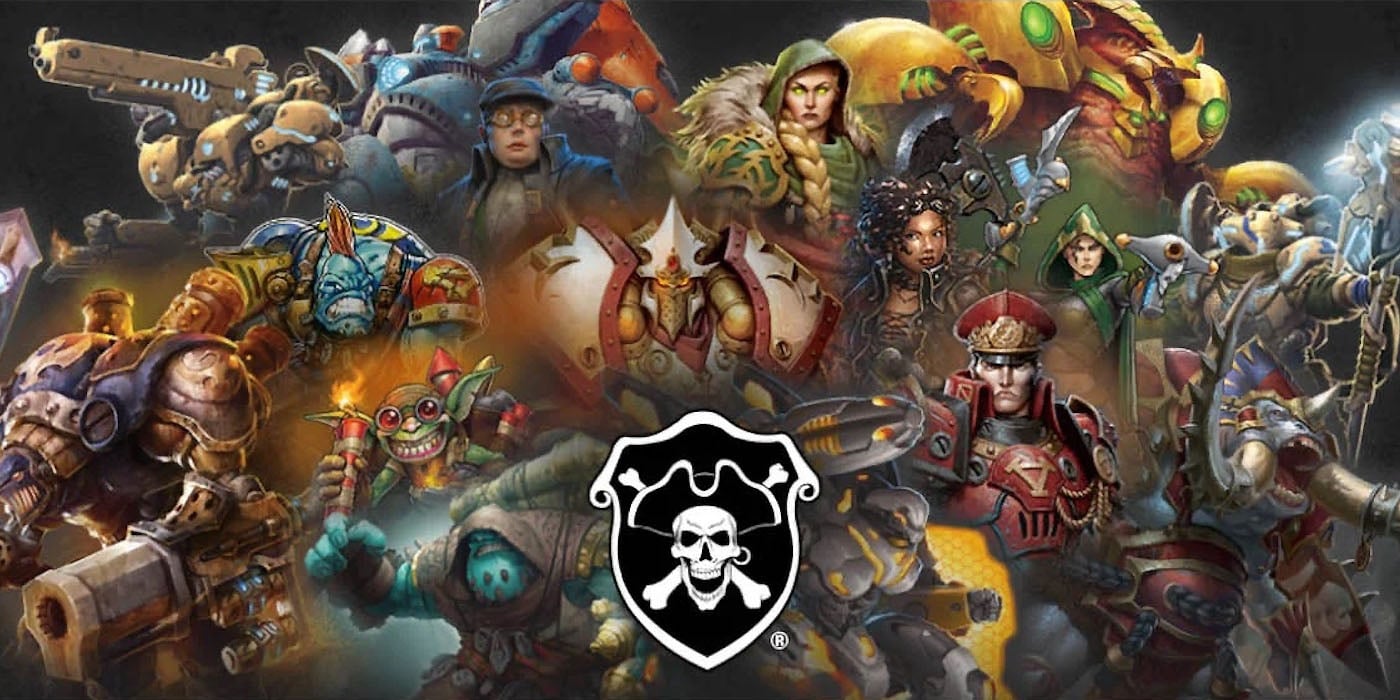Warmachine Editorial: Performance Enhanced Gaming


E-sports are starting to take performance enhancing drugs seriously. Should Warmachine, Hordes, and other tabletop tournament wargames do the same?
Chalkboard here from Chalkboard War, with a discussion of performance enhancements in Warmachine and Hordes.
In a recent editorial, I discussed the situation of the asterisk—that moment when you realize that a mistake has been made that affected the outcome of a game. That got me thinking and talking with others about aspects of cheating in gaming, and my friend The Brewzok made a joke about doing an exposé on performance enhancing drugs in Warmachine, Hordes, and tabletop wargaming in general. While we laughed at the time, the idea has remained on my mind. Hence, this new series on performance enhancers in tabletop wargaming.
Baseball, cycling, and the 1976 East German Women’s Swimming Team are the most famous cases of performance enhancing drug use in competitive sports, but it’s a trend that has spread throughout every major sport. More importantly for our purposes as tabletop wargamers, both professional poker and competitive video gaming competitions are seeing performance enhancing drug use among their players. This summer’s revelation from professional video game players that a major team was using Adderall to heighten their focus prompted plans for drug testing in E-sports. As if E-sports wasn’t already burdened with the terrible “E-sports” name to begin with. At least they ducked “Cyber-sports”. Why isn’t competitive video gaming enough?
Naming conventions aside, there are products and chemicals that are helping players out in areas that are roughly similar to games like Warmachine and Hordes. Focus, concentration, memory, and fatigue are all just as much part of a Steamroller tournament as Counterstrike, League of Legends, or Dota 2. It might seem silly to think about doping in the context of a tabletop wargame, but there are actually some fine lines that need to be defined. What is the difference between needing a cup of coffee to have my head in an early morning tournament game, and abusing Adderall to improve my focus? What if I got my caffeine from a pill? Caffeine pills? “I’m so excited… I’m so scared!”
Pretty much the only part of Saved by the Bell I remember besides the murder mystery weekend episode
Seriously though, Warmachine and Hordes has a vibrant tournament scene. There have been moments where cheating at major tournaments has been documented and punished in the past, as the glory of winning and the amazing trophies are sadly an incentive to some to cheat. Given Warmachine and Hordes’ status as games designed explicitly with tournaments and balance in mind, there will come a point when Privateer Press and the player base will need to take a stance on what’s fair and what’s unfair when it comes to performance enhancing drugs.
The reason performance enhancement is a problem is that it violates the spirit of gaming. The World Anti-Doping Code (2015) suggests that the reason to monitor performance enhancements is to “preserve intrinsically valuable” about sports (14). Doping is designed to give an unfair advantage over another opponent, which violates values of honesty and fairness within the context of the competition–the very values that make competitions enjoyable in the first place. It should be clear that this is not only an issue for conventional sports, but for all of gaming. Including Warmachine and Hordes.
We need to work out as a community where that line lies–the difference between a cup of coffee to perk oneself up and a pill that sharpens memory and focus. It’s not an easy line. This article will end with an exploration of three areas where physical (material) unfair advantages can be utilized by players. Next week my article will focus on the other side of the line: the myriad of common and perfectly allowable “performance enhancers” for tabletop gaming. These are things that can greatly help your game but do not violate the spirit of fair competition.
Substance Abuse
All joking aside, this is something that the Warmachine/Hordes community needs to address before it becomes an issue. The case of electronic gaming competitions above shows us that it could be a concern in our competitions as well. The issue is focus, concentration, and energy. Warmachine and Hordes tournaments can be long and tiring. There’s the sheer physical time that they stretch, but that’s complicated by the requirement of the game to stay mentally sharp. I’ve heard people compare the game to chess–that a simple opening on your part could mean checkmate in a matter of moments. To be successful at the game, it means possessing two key things: focus and memory. You need focus to make certain you get your order of activations correct, your battle line spaced properly, and everything positioned “just so”. Any distractions can throw a player off their game, and lead to mistakes in ordering or movement. Likewise, Warmachine and Hordes are memory-intensive games. Remembering everything your own units can do is sometimes a challenge, which is only multiplied when remembering everything that each opponent’s force can do.
And that’s where substance abuse could potentially enter the picture. Competitors in other areas already admit to using drugs that treat narcolepsy to improve alertness, drugs for anxiety to smooth nervousness, and drugs aimed at ADHD to improve focus and recall. Whether or not they actually work to aid those functions is less important than the fact that competitors are using them, and they are attributing their success in part to them. In particular, Adderall seems to be the main potential problem. There’s already sufficient abuse of Adderall on college campuses due to claims about improving study time and recall. The demographic of users trends toward men, and college and post-college age men are prime demographics of Warmachine and Hordes players.
I think it’s time to start a conversation about these practices within our own gaming circles. From Masters to Steamroller to Journeyman, Privateer Press includes a sportsmanship section in their organizational rules. The relevant portion reads: “An [event organizer] can also disqualify a player for any incident that is deemed unsporting. This includes offensive or abusive conduct, bullying, cheating, constant rules arguments, improper play, stalling, and other inappropriate actions.” Performance enhancing substance abuse falls into an odd spot, because it’s not properly cheating unless there is a direct prohibition of the action. Thus, event organizers would have to utilize the “other inappropriate actions” section of the sportsmanship clause. It’s there to be a catch-all, so it works in that fashion. But even just a bit of clear guidance in what is considered unfair when it comes to substance intake would greatly improve the clarity of the situation.
If you’re thinking “who would mis-use drugs to get an advantage in a game?”: more and more tournaments are offering really amazing prize support, and greed is a powerful source of temptation.
Body Marking
This and the next entry in the list are likely more correctly called straight cheating rather than performance enhancement, yet they both involve unfair adjustments to the physical space of gaming–oneself and one’s tools. Maybe it’s because I’m an educator (it’s Chalkboard for a reason), but people’s inclination to write on themselves to get an unfair advantage has a long tradition. And there’s no reason it couldn’t be abused in gaming. We’ve been measuring with our bodies throughout human history: the Cubit is best-known, don’t forget spans, handsbreadths, paces, and ells–heck, even the inch and the foot in imperial measurements are based off of parts of the body. Everything we’re doing in Warmachine and Hordes with our hands and arms could be a potential measuring tool if someone intended to do so.
Part of Warmachine and Hordes is the issue of what you can pre-measure and what you cannot. Everyone’s knows the “just checking my control area” statement, and why we use it. But there are moments when you really do have to guess range. I was off by just a fraction of an inch with my latest Storm Troll charge in a game, leaving him woefully unable to lash into the Sword Knights in front of him to get his sweet electro-leaping action rolling thanks to his animus. The failed charge or long range shot, as well as the joy of taking a chance and finding that you were correct, is part of what makes the game so fun.
However, where there’s a way, there’s a will (to cheat). I’ve before called a player out on what is effectively “handsbreadthing.” Laying his hands near models and gauging distance with them. I could envision more unscrupulous players devising whole marking systems on their arms. With a bit of math, you could even convert it to one’s height and line of eyesight and do “floating” measurements. From shirts with exact inch check marks to subtle marks on the body, it seems like there’s at least the possibility of modification for unfair gain. To the extent that it is a physical manipulation of the self (markings, tattoos, or other) it would seem to fit the broad claim of being a performance enhancing issue.
The symbol for a cubit appeared on heraldry (above left), and variations put all sorts of items diagonally aligned in the grip to.The beautiful Privateer Press masters trophy (above right) uses the same historical symbol. Coincidence or body-marking-measurement-cheating evidence at the highest levels? Probably the former. But still.
Dice Manipulation
Like before this instance isn’t exactly a performance enhancing drug per se, but I thought that dice were important to mention. They may not be a drug (as they’re usually not taken internally), but they’re at least chemicals. And yes, I know that everything is chemicals. Dice can fall on the spectrum in the same way as a corked bat or a spitball pitch in baseball. There’s two aspects to where dice gets problematic. The first is the physical composition of the dice. Players can mix dice with designs that replace the 6 with dice that have designs that replace the 1, and call all “designs” 6’s. Dice can be chosen with purposefully obfuscating images surrounding the numbers. Fast rolling and quick scooping are problem enough, complicated more when the dice have all sorts of images on the facing besides the numeral. It’s not a problem in Warmachine and Hordes, but players purposefully have chosen numeral dice that show 6’s and 9’s are not marked 6‘s and 9‘s in order to call both as the better number. And finally, there’s the urban legend of microwaving dice to make them settle with certain numbers up.
Then there’s the more “performance enhancement” side of dice. I’ve mentioned the quick scoop above–pulling up dice quickly so an opponent doesn’t have time to do the math themselves. Likewise, there are techniques for “pitching” dice–throwing them at odd angles to increase the likelihood that they spin rather than roll. The good news is that we can generally police this manner ourselves with a simple “would you roll them?” In that someone would have to train themselves like a casino shark or angle player, perfecting precise movements to not get caught, the question becomes “is it worth it?” For some players, sadly the lure of “the win” is more important than the honesty of the play. In either case, it’s the same story as other performance enhancements: an unfair physical advantage in the competition which is exploited to increase the odds of victory.
The Skorne Dice on the left are bad enough with the near-interchangeable 2’s and 5’s. But the clear crystal-form dice on the left? Just Say No.
I bring up these two second cases because they can serve as comparison points for the first. If we start to say “yeah, markings on arms to measure and wonky dice throw strategies are unfair”–which I think is fair to claim–then we ought say “so is non-prescribed use of prescription chemicals for enhanced focus and memory.” Again, if competitive video gaming is seeing those moves then we in tabletop gaming should likely follow suit.
This week I asked the questions about problematic performance enhancements in tournaments. Next week I’ll be looking at the myriad of common and perfectly allowable “performance enhancers” for tabletop gaming. The things that can greatly help your game but do not violate the spirit of fair competition.
~ What performance enhancements are “over the line” for Warmachine and Hordes? Let us know in the comments below.
Want to see Chalkboard’s clearly performance de-hanced painting and armies? Check out his blog at www.chalkboardwar.com.






